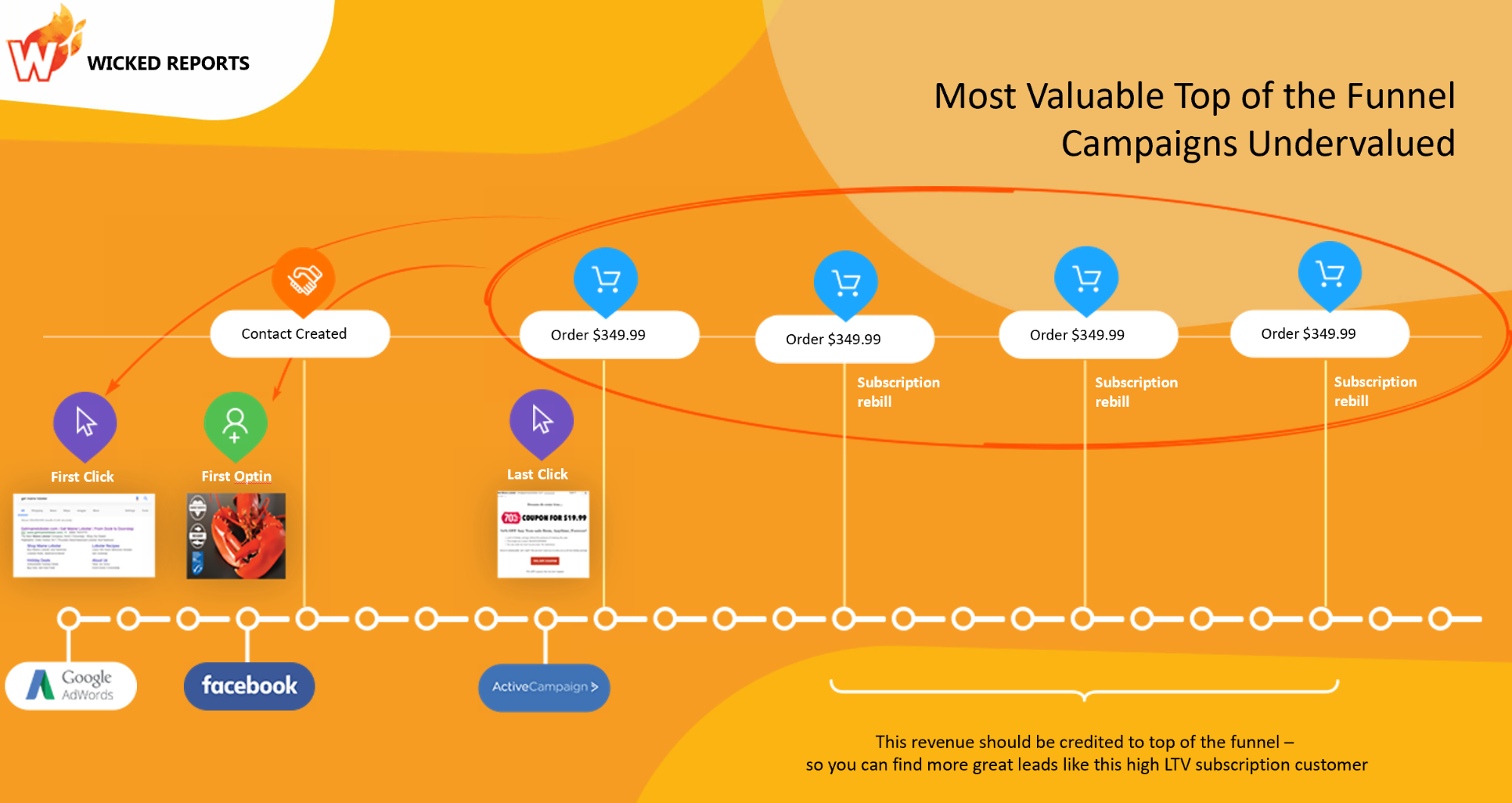-1.png?width=1920&height=1080&name=image%20(3)-1.png)
Wicked Reports marketing attribution has important distinctions with Google Analytics Attribution pixel conversion reporting. Google Analytics Attribution relies on a tracking pixel to fire when a conversion happens. The conversion value is dependent on a hard-coded value you set in your pixel code.
The Google Analytics Attribution tracking pixel has 3 major problems: It misses all subscription recurring conversions, it does not differentiate between sales conversions of different values, and it does not connect new lead conversions to customer lifetime value.
Let's look at the specific differences Wicked Reports has with the Google Analytics Attribution solution.
|
Wicked Reports Tracks multi-channel clicks and reports them against identified leads and sales forever. |

|
Google Analytics has a limited time window for conversions which are anonymous, so you can't verify them or trust them. |
|
Wicked Reports detects real conversions from your CRM and sales data. We attribute conversion value for the lifetime of the customer. |

|
Google Analytics Attribution only attributes conversion value for the amount hard-coded in the pixel code. |
|
Wicked Reports attributes customer lifetime value back to top of the funnel lead conversions detected from your CRM - so you know it's a real lead. |

|
Google Analytics Attribution does not provide conversion weighting based on new lead generation, and does not attribute customer lifetime value back to new lead generation. |
|
Wicked Reports automatically detects your subscription recurring revenue and attributes back to the deserving cross-channel clicks. |

|
Google Analytics Attribution is blind to subscription recurring revenue conversion value. |
|
Wicked Reports can tell when a campaign generates new leads or is converting existing leads. Wicked Reports automatically builds a customer journey based on clicks, CRM events, and Sales conversions. This customer journey pinpoints the ROI in your funnel (or lack thereof). You can shift ad budget to the higher ROI funnel conversion areas and save wasted budget elsewhere. |

|
Google Analytics Attribution conversion tracking is clueless if a lead is a new lead or an existing lead that clicks on an ad. This hurts your ability to scale winning campaigns. Top of the funnel offers convert better on new leads, and middle of the funnel offers generally convert better on existing leads. |
Google Analytics Attribution generates a string of code that you place on any page you wish to call a conversion. When a visitor lands on that page, Google Analytics Attribution counts it as a conversion.
You won’t be able to scale cold traffic new lead acquisition campaigns if you can’t measure their effectiveness on new leads. Already existing leads will muddy the data.
Advertisers can add a line of code to the conversion code snippet and indicate the value of a conversion. This conversion value hard-coding causes confusion in your reports unless all your products are priced at the same amount.
Google Analytics Attribution relies on a page visit to track a conversion. Subscription recurring payments do not have a page visit, they occur in a billing system.
![video assets@3x[resized]](https://www.wickedreports.com/hs-fs/hubfs/video%20assets@3x%5Bresized%5D.png?width=2000&height=1177&name=video%20assets@3x%5Bresized%5D.png)